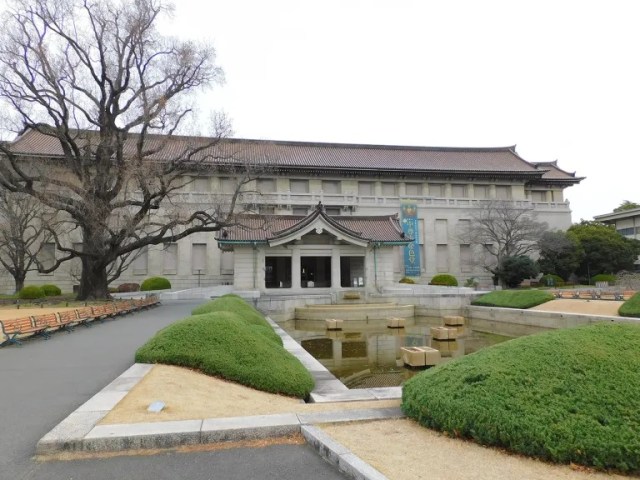
One of the Five Swords Under Heaven is now under the roof of this downtown museum.
Throughout the ages, there have been many great katana forged by swordsmiths in Japan. Five of them, though, are held to be the greatest of all, the ultimate examples of true artists putting all of their skill, knowledge, and soul into the blades they forged, and one of the five is said to have the power to slay a demon with a single stroke. Recently, our Japanese-language reporter Seiji Nakazawa heard news that this sword has recently surfaced in Tokyo, and so he set out to find it.
Those of you who are familiar with Seiji’s hobbies might think that he’s been watching too much anime and getting a little delusional with his daydreams. That’s not what’s happening here, though, as one of Japan’s five greatest swords really is currently being housed in the Tokyo National Museum and viewable by the public.
Those five storied swords are collectively known as the Tenka Goken, or Five Swords Under Heaven. Among them, the Dojigiri is especially revered, because of its connection to the legend of Shuten-doji, a demon that, according to legend, terrorized Kyoto roughly 1,000 years ago, during the Heian period. Shuten-doji’s crimes included the abduction and devouring of women from the capital, until the samurai Minamoto no Yorimitsu and his companions incapacitated Shuten-doji with divine sake and he slew the demon with his sword, the Dojigiri (Dojigiri translates as “Slayer of Doji”).
As with all historical legends, how much of that story is true is something that’s difficult to determine here in the present day. What is a fact, though, is that the Dojigiri is a real sword, forged hundreds of years ago and immaculately preserved, and that you can see it right now at the National Museum. Just purchase a ticket, head into the main hall of Building 1, and head into Room 13, on the right side of the first floor.
Once you’re in Room 13, turn to your left, and there it is.
Even from far away, Seiji could tell that this is a special sword. Despite being roughly a thousand years old, the Dojigiri still gleams brilliantly.
Historians have determined that the sword was forged by Yasutsuna, a master swordsmith who lived in a part of Western Japan that’s now Tottori Prefecture. The exact age of the sword is unknown, but it’s estimated to have been forged in the 10th to 12th century. Looking at it, though, you could be convinced that it’s a brand-new blade, as it’s been exquisitely cared for over the years.
That level of care has come from some very exalted owners, as the sword was passed from the lords of both the Ashikaga and Tokugawa shogunates, and then those of the Echizen Matsudaira and Tsuyama Matsudaira samurai clans. The Dojigiri is now officially designated as National Treasure by the Japanese government.
Compared to other katana from the era, Seiji was struck by how long and broad the blade is. It definitely looks like the sort of thing that could lop off a demon’s head.
Japanese swords are customarily displayed as the blade only, the better to observe the metalworking craftsmanship and the swordsmith’s signature mark, which is often chiseled into the hilt/tang. Katana scabbards, handles, and handguards are works of art in their own right too, though, and presented next to the Dojigiri, in the same case, are a set that was made for the demon-slaying sword sometime in the 17th century.
While the National Museum is open year-round, the Dojigiri isn’t always viewable, and sometimes isn’t even in Tokyo at all, if it’s scheduled to be part of an exhibition elsewhere. As of March 5, though, the museum has shuffled the selection of swords in Room 13, giving the Dojigiri a chance to literally shine.
The Dojigiri isn’t the only beautiful bladed artifact to be seen, of course. Also displayed nearby is a 17th century katana forged by the fabled Edo smith Kotetsu…
…and there’s even a Muramasa blade.
The Muramasa is especially interesting. Though the smith’s swords were renowned for their sharpness, multiple members of the family of shogun Tokugawa Ieyasu had their lives ended by a Muramasa sword, and Ieyasu himself suffered an injury in battle from an opponent wielding one. Rumors began to swirl that Muramasa swords were cursed, with the blades themselves thirsting for blood and driving their owners to madness, and their possession became banned by the shogunate. Many of those already in possession of a Muramasa took to modifying the tang signature to mask its maker, but the one currently on display at the National Museum, which was made in the 16th century, bears Muramasa’s unaltered name.
With one of the world’s finest collections of not only Japanese swords, but Japanese historical art in general, there’s always a wealth of amazing things to see at the National Museum. If you want to see the Doigiri, though, it’s scheduled to be on display until May 26.
Museum information
Tokyo National Museum / 館名 東京国立博物館
Address: Tokyo-to, Taito-ku, Uenokoen 13-9
東京都台東区上野公園13-9
Open 9:30 a.m.-5 p.m. (Sunday, Tuesday-Thursday), 9:30 a.m.-7 p.m. (Friday, Saturday)
Closed Mondays (open if Monday is a holiday, in which case closed the following day)
Website
Photos ©SoraNews24
● Want to hear about SoraNews24’s latest articles as soon as they’re published? Follow us on Facebook and Twitter!
[ Read in Japanese ]